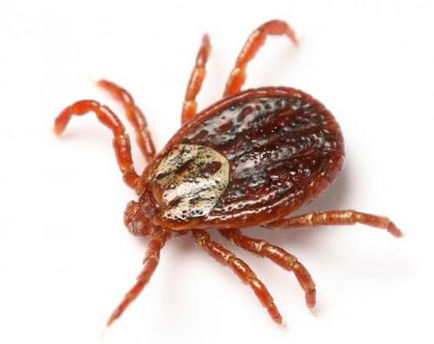
Behavior
Ticks are blood-feeding ectoparasites that belong to the arachnid family. They have a distinct life cycle, and their behavior revolves around finding hosts to feed on. Here are some key aspects of tick behavior:
- Host-Seeking Behavior: Ticks have specialized sensory organs that help them detect potential hosts. They are attracted to the carbon dioxide, body heat, and odor emitted by animals and humans.
- Questing: Ticks employ a behavior called questing, where they climb to the tips of grasses, shrubs, or low-lying vegetation, and extend their front legs in search of a passing host. They then grasp onto the host as it brushes against them.
- Blood Feeding: Once attached to a host, ticks use their specialized mouthparts to pierce the skin and feed on the host’s blood. They secrete a substance that prevents blood clotting, making it easier for them to obtain a blood meal.
- Host Selection: Ticks are not host-specific and can feed on a wide range of animals, including mammals, birds, reptiles, and even humans. Different tick species have preferences for certain hosts, but they can adapt to feed on other hosts if necessary.
- Feeding Duration: Ticks feed for varying periods depending on the species and life stage. Some ticks complete a blood meal within hours, while others may feed for several days.
- Drop-Off After Feeding: Once engorged with blood, ticks drop off the host to find a suitable location to molt and develop to the next life stage.
- Nocturnal Activity: Some tick species are more active at night, while others are active during the day. The behavior can be influenced by environmental factors and host availability.
- Hiding and Molting: Between blood meals, ticks seek shelter in leaf litter, tall grasses, or other suitable hiding spots. During the molting process, ticks shed their outer skin (exoskeleton) to progress to the next life stage.
- Life Cycle: Ticks undergo a four-stage life cycle: egg, larva, nymph, and adult. Each stage requires a blood meal to progress to the next stage.
- Disease Transmission: Ticks can transmit various diseases to their hosts, including Lyme disease, Rocky Mountain spotted fever, and others. The transmission of diseases is typically through their saliva during feeding.
It’s important to take preventive measures to avoid tick bites, such as wearing protective clothing, using tick repellents, and conducting thorough tick checks after spending time outdoors. If you find a tick attached to your skin, it’s essential to remove it properly and promptly to reduce the risk of disease transmission.
Infestation Warning Signs
Unlike some other pests, tick infestations are typically associated with outdoor environments rather than indoor spaces. Signs of a tick infestation are more related to the presence of ticks in the surrounding areas. Here are some signs that indicate the presence of ticks in the environment:
- Tick Sightings: If you spot ticks crawling on vegetation, grass, or other outdoor surfaces, it is a clear indication that ticks are present in the area.
- Host Animals: Observing ticks on pets, livestock, or wildlife in your vicinity suggests that the area is infested with ticks.
- Tick Nymphs: Ticks go through various life stages, including nymphs. Nymphs are tiny, immature ticks that can be challenging to spot but may be present in tick-infested areas.
- Tick Eggs: In some cases, you may come across clusters of tick eggs attached to vegetation or hiding spots. Tick eggs are small, oval-shaped, and may have a translucent appearance.
- Tick-Infested Habitats: Ticks thrive in specific habitats, such as wooded areas, tall grasses, and leaf litter. If you notice such environments, there is a possibility of tick infestation.
- Tick Bites: If you or your pets frequently experience tick bites after spending time outdoors, it is a sign that ticks are present in the area.
- Tick-Borne Diseases: An increase in tick-borne diseases in your region may indicate a rise in the tick population.
- Tick Attachments: After outdoor activities in tick-prone areas, check yourself, your family members, and pets for attached ticks. Finding ticks on the skin suggests their presence in the environment.
It’s important to remember that tick infestations are more concerning from a public health perspective than traditional pest infestations. Ticks can transmit various diseases, so it’s crucial to take preventive measures when spending time in tick-prone areas. Wear protective clothing, use tick repellents, and conduct thorough tick checks after outdoor activities to minimize the risk of tick bites and potential disease transmission. If you suspect a tick infestation in your outdoor environment, consider contacting local pest control or public health authorities for guidance on tick control and prevention.
Top Pest Control Tips
Getting rid of ticks involves a combination of preventive measures and targeted treatments. Here are some top tips to effectively control and minimize ticks in your surroundings:
- Modify Tick Habitats: Reduce tick-friendly environments by keeping grass short, clearing leaf litter, and trimming shrubs and vegetation around your home and outdoor living spaces.
- Create a Tick Barrier: Consider creating a barrier using gravel or wood chips between your lawn and wooded areas to reduce tick migration into your yard.
- Use Tick Repellents: Apply EPA-approved tick repellents containing DEET or picaridin to exposed skin and clothing when spending time in tick-prone areas.
- Wear Protective Clothing: When hiking or engaging in outdoor activities, wear long-sleeved shirts, long pants, and tuck pants into socks to prevent ticks from attaching to your skin.
- Perform Tick Checks: After outdoor activities, conduct thorough tick checks on yourself, family members, and pets. Pay close attention to areas like the hairline, underarms, groin, and behind the ears.
- Remove Ticks Properly: If you find a tick attached to the skin, use fine-tipped tweezers to grasp the tick close to the skin’s surface and pull upward with steady pressure. Avoid squeezing the tick’s body, as this can increase the risk of disease transmission.
- Prevent Pet Infestations: Regularly check and groom your pets for ticks. Consider using tick preventives recommended by your veterinarian.
- Tick-Proof Your Yard: Use tick control products, such as acaricides or tick sprays, in your yard or garden to target ticks at various life stages. Seek professional advice before applying these products.
- Inspect Outdoor Gear: After spending time outdoors, carefully inspect camping gear, backpacks, and outdoor clothing for hitchhiking ticks.
- Educate Yourself: Familiarize yourself with tick-borne diseases common in your area and their symptoms. Seek medical attention promptly if you suspect you or your pet has been bitten by a tick.
- Professional Tick Control: If you have a severe tick problem or need assistance in managing ticks on a larger property, consider seeking help from a professional pest control service that specializes in tick control.
Remember that ticks are a common outdoor pest, and while complete elimination may be challenging, these tips will help you reduce tick encounters and lower the risk of tick-borne diseases. Consistent preventive measures are key to protecting yourself, your family, and your pets from tick bites and potential health risks.


